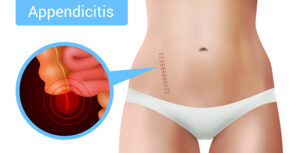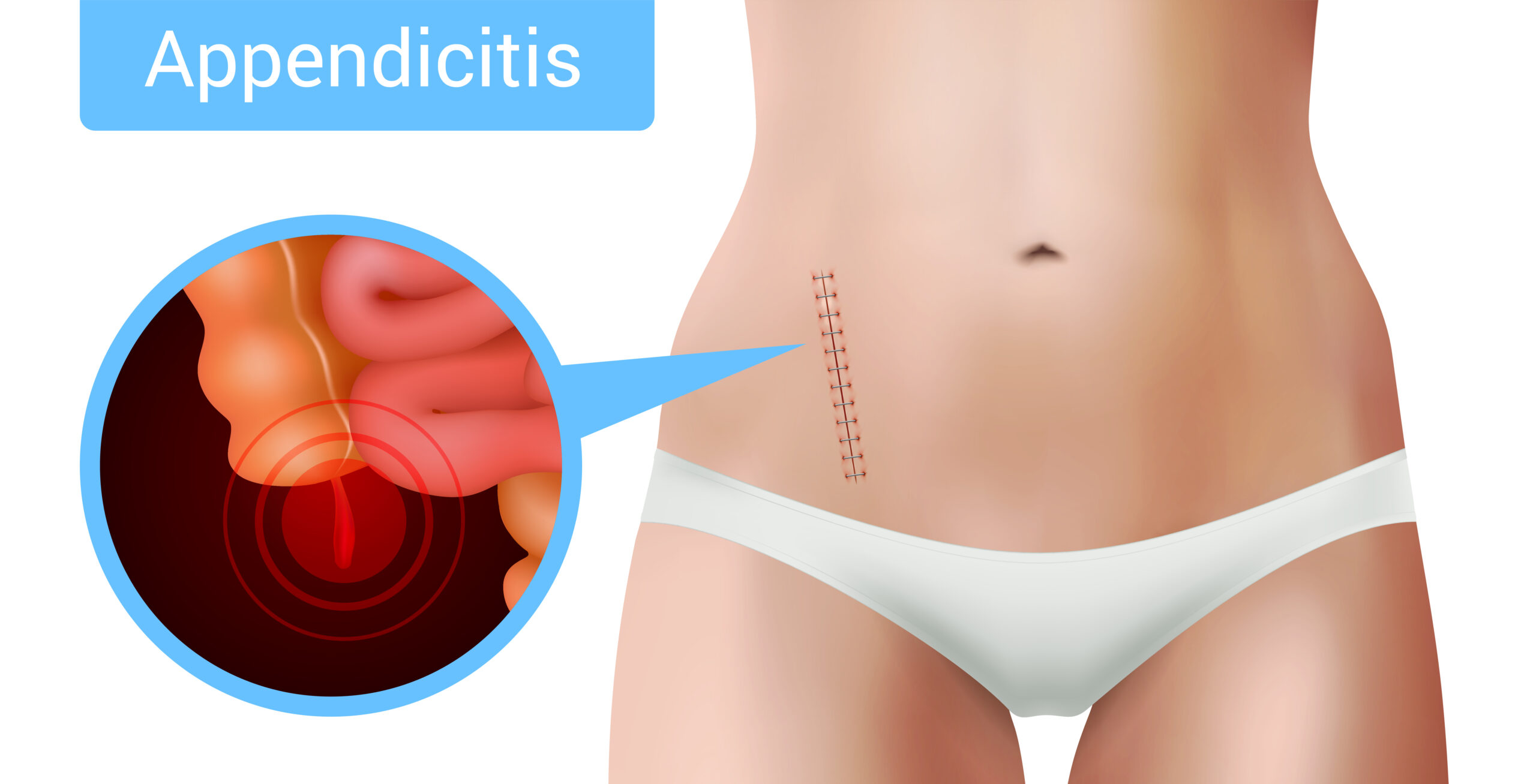The appendix is a small finger-like pouch that is situated in the right lower region of our abdomen which can get inflamed. And this inflammation of the appendix is called appendicitis. Further more it is a rare condition among infants and it occurs in an increased significance in childhood and early adult life. Also the highest amount of incidence is noted at age of 20 years.
How it is caused?

- Solid accumulation of fecal matter
- Foreign body
- Narrowing of the small intestine
- Tumor can obstruct the lumen of the appendix
The above causes will result in bacterial infection inside the appendix. In addition these infections can cause swelling, production of pus, and inflammation which can result in the appendix.
Etiology of Appendicitis
Factors that can cause appendicitis are as below
- Decreased dietary fiber intake
- Increased consumption of refined carbohydrates
- Tumors that arise due to cancers in the gastrointestinal tract
- Infections of intestinal parasites such as pinworms
Clinical Manifestations of Appendicitis
- Abdominal pain is poorly localized at the beginning. First it appears around the umbilical area and later in the right lower region of the abdomen.
- Feeling pain when the abdomen is palpated.
- Abdominal pain is increased when you are coughing or initiating sudden movements
- Reduced appetite
- Nausea and vomiting
- Mild fever with temperature between 37.2 Celsius – 37.7 Celsius which occurs after the onset of abdominal pain normally.
- Constipation and diarrhea
- Bloating and flatulence

Complications of Appendicitis
- A ruptured appendix is the commonest complication. So it can spread the infection throughout the abdomen and put your life at risk if not treated urgently.
- A collection of pus as a pocket can form inside the abdomen.
Who is at Risk of Having a Ruptured Appendix?
- Extremes of age.
- People who have conditions that weaken the immune system as Diabetes mellitus.
- Previous abdominal surgery.
Diagnosis of Appendicitis
The Alvarado score is a scoring system that assesses the symptoms, signs, and laboratory findings.
- Doctors considered as appendicitis if the score is higher than 7 out of 10.
- You will be given 1 mark if you are having abdominal pain in the right lower region, loss of appetite, vomiting, abdominal pain for palpitation, increased body temperature, increased white blood cell counts in FBC, and for a few other signs.
The investigations which are used to confirm the diagnosis are,
- Full blood count
- Urine analysis
- Serum electrolytes
- Pregnancy test
- Ultrasound scan
- Contrast enhanced CT

Management of Appendicitis
Non-operative management
The condition is managed conservatively if it is not complicated. Bowel rest and intravenous administration of antibiotics such as Metronidazole and 3rd generation Cephalosporins are done in non-operative management.
Operative Management
Appendicectomy is the surgery done and it includes the removal of the appendix from your body as it is inflamed. Before the surgery,
- You will be given intravenous fluids and antibiotics.
- The fever will be settled by oral drugs.
If there is an abscess form it will have to be drained by inserting a drain line. Complications that can occur after surgery are,
- Surgical site infections
- Formation of abscess inside the abdomen
- Paralysis of a part of the small intestine
- Obstruction of the intestine due to adhesion caused by the surgery and blood clot formation in veins.
So, you must be alert about those conditions during the post-operative period.
Lifestyle Changes during Post-Operative Periods
- Avoid strenuous activity for 2 weeks if it was done as an open surgery and for 4-5 days if it was done laparoscopically.
- Apply pressure to your abdomen using a pillow or by some other means, when you are coughing, laughing, or during sudden movements.
- If pain persists contact the doctor immediately to change medications.
- Start your activities slowly with non-tiring activities such as small walks.
- Get adequate sleep as it is essential for healing.
References
- Bailey and Love’s Short Practice of Surgery- 27th Edition
- Kumar and Clerk’s Clinical Medicine -8th Edition- Parveen Kumar, Michael Clark
- Oxford Handbook of Clinical Medicine – 10th Edition
- Browse’s Introduction to the Symptoms and Signs of Surgical Disease – 4th Edition – Norman L. Browse, John Black, Kevin G. Burnand and William E.G. Thomas
- Image by stefamerpik on Freepik
- Image by macrovector on Freepik
- Image by jcomp on Freepik

